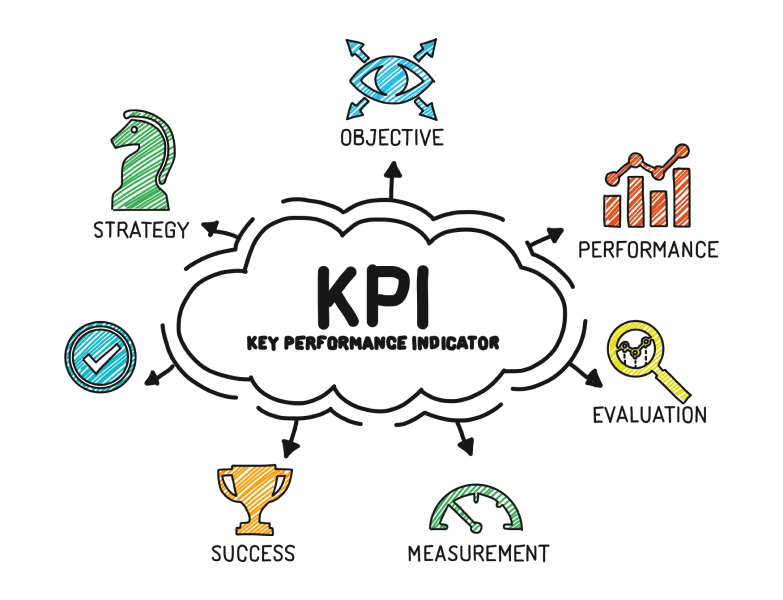Account Based Marketing Demystified!
If you haven’t heard about it before, Account-Based Marketing (ABM) is a marketing strategy that takes the concept of picking a niche to the extreme. It doesn’t target a whole marketing segment as usual, instead, it targets specific high-value high-opportunity accounts that can bring on much more revenue and reputation to the company. One of the things that makes it very attractive as a marketing strategy is it allows a very high level of personalization. Since you’re targeting individual accounts, you can craft your offering and your approach to provide these clients with solutions that perfectly address their pain-points. Allowing you to set higher price points and increasing the probability of them signing up for what you have to offer.
Account Based Marketing in action
- It has been proven over and over again that ABM, when executed effectively, deliver unmatched results.
- 84% of businesses say that ABM has a higher ROI than other marketing campaigns (ITSMA)
- 41% OF B2B marketers worldwide plan to increase spending on ABM (eMarketer).
- Companies are 68% better at closing deals when their sales and marketing teams are in sync (which is the case for successful ABM) and also generate 208% more revenue. Yes, you read that right 208% more revenue! (Marketo and MarketingProfs)
- According to SiriusDecisions, organizations with ABM strategy experience 200% pipeline growth and also saw a 20% increase in deal size.
Questions to ask before considering Account-Based Marketing for your Small-Medium Business
Who is it for?
Generally speaking, ABM is a B2B strategy that’s usually used by companies that go after big high-value account. This strategy is not only applied by large businesses, even if you own/manage an SMB business, it can be a good idea to give Account-Based Marketing a try as long as you have big accounts in your pipeline.
Risk of not working?
But what if you focused all your company’s marketing efforts to ABM, targeting specific accounts only and couldn’t sign them up in the end? Should you risk going bankrupt?! (being overly dramatic here).
According to LinkedIn’s extended article on Account-Based Marketing, they said it’s usually used as an effective strategy to complement your other marketing efforts, not to necessarily replace them. So ideally you run an ABM strategy in concurrence with your other regular marketing funnels. Unless you see it’s feasible enough to shift the whole company’s marketing strategy to ABM.
Why consider adding ABM to your company’s marketing mix?
Well, Account-based marketing requires relatively more research and effort, along with higher risk since you dedicate a chunk of your marketing and outreach resources for a small number of attractive prospects instead of target a whole market segment. But when looking at the long-term rewards, ABM, when done effectively, can take your business to a whole new level. Here are a few reasons why adding ABM to your company’s marketing mix is totally worth the gamble.
1- Highly selective targeting: In ABM, you focus on the handful of companies that are high-opportunity and high-value, the prospects that you know are facing the specific problem you solve, so you know for a fact they NEED the services that your company offer, and most importantly have the budget to afford your prices. This allows your targeting to get super-specific.
2- Portfolio and reputation boost: If you successfully close and serve a high-level client through ABM, you will not just dramatically increase your revenue (since you can charge premium-prices with this type of clients), but it will also boost your company’s portfolio and gives it more exposure to similar high-level clients (word of mouth, anyone?)
3- Stellar ROI: Since you’re addressing and specifically catering for high-value clients, landing a contract has a disproportionate return on investment for your company’s revenue. And this isn’t just speculation. As said above 84% of surveyed businesses using ABM, said it delivers higher ROI.
4- Priceless insights: Over time, ABM gives your marketing and sales team real-time insights on general patterns in the needs, wants and behavior of premium clients. Stacking this kind of data, insights and experience can accelerate your ABM targeting and marketing on one hand and on the other hand it can allow you to start experimenting with targeting premium clients on a wider scale (as a market segment instead of individual accounts) in your mainstream marketing strategy.
How to create an account-based marketing strategy
The following are very basic steps to start creating your company’s account-based strategy
1- If you’re not already clear on the problems your business solves best, your unique strength points then you need to get clear on them before offering your services/products to high-value prospects.
2- Create a list of the accounts/prospects that are both high-value and high-opportunity to your company. The companies that you know need the solution you’re offering and are able to afford a premium to get what you have to offer. There can be more factors to the accounts you choose than
3- Study the target accounts well to pinpoint their pain-points and decide on the solution your company has to offer
4- Set a sales and marketing strategy in place and start executing. One of the common ABM strategies is running LinkedIn campaigns targeting specific job functions within your target accounts. ABM doesn’t have to be only digital, there’s offline strategies that can be applied as well such as personalized direct mail.
5- Gather and analyze the feedback data you get from the execution and optimize your sales and marketing efforts accordingly.
These steps are ideally done by the marketing and sales teams in a collaborative effort. Especially for this specific strategy, it’s necessary that the sales and marketing teams work side by side on developing the right message, offer, sales pitch and marketing material that match their specific targeted clients.
If you’re still skeptical about the feasibility of Account-Based Marketing for your business, you can try testing it for a few high-value account/prospect with a relatively small budget for a couple of months and see if it was worth the investment.
What do you think of ABM? Have you tried it before? What tactics have you tried? Let us know in the comments below.


